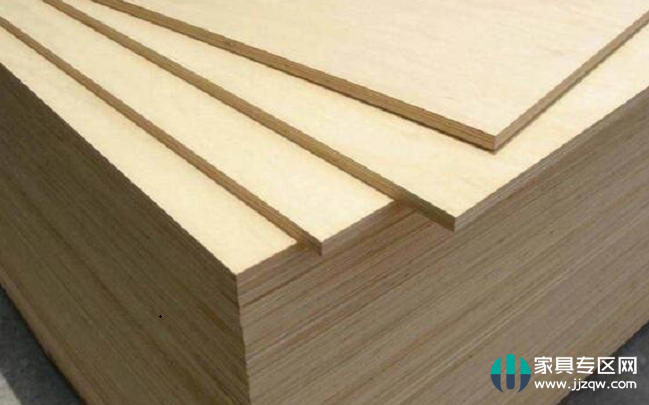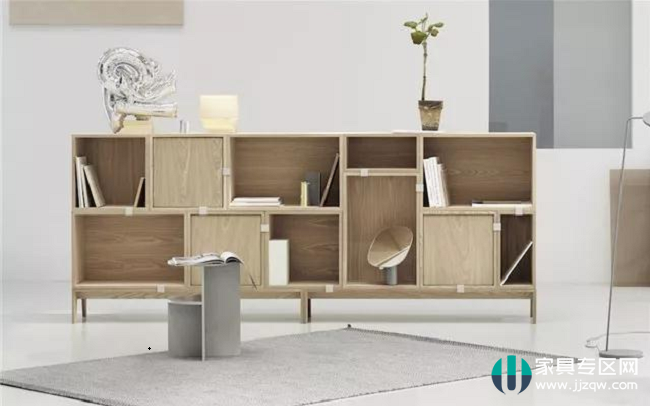Newly developed resin-based bionic artificial wood, close to the day

The new artificial wood not only has a wood-like oriented tunnel structure, but also has mechanical strength comparable to that of natural wood. More importantly, artificial wood also has good corrosion resistance, heat insulation and fire resistance.
Steel, resin, carbon fiber... These synthetic materials have become more and more popular in daily life. This is not only the result of scientific and technological progress, but also the constant pursuit of a better life by mankind.
However, there is always a material that has not been completely replaced, and that is wood. Due to their light weight, toughness and ease of processing, these are irreplaceable by artificial materials.
On September 7, 2018, the research team led by Yu Shuhong, a professor at the School of Chemistry and Materials Science of the University of Science and Technology of China, heard good news. The team developed resin-based bionic artificial wood using traditional phenolic resin and melamine resin as matrix materials. Miraculously, it is not only chemically close to natural wood, but also has an oriented pore structure similar to natural wood.
It is this structure that allows the wall thickness and pore size of the artificial wood to have good controllability, and the compression yield strength is also comparable to that of natural wood. Moreover, in addition to its light weight and high strength, it has the advantages of corrosion resistance, heat insulation and fire resistance compared with natural wood. It is reported that this artificial wood is expected to replace natural wood and achieve its application under harsh or extreme conditions.
Select material
The use of artificial materials to simulate natural wood is not an easy task. Why choose traditional phenolic resin and melamine resin as the matrix material? Yu Shuhong explained in an interview with the Journal of the Chinese Journal of Science, because the chemical composition of wood is mainly composed of matrix. Material lignin and filler material composed of cellulose fibers. The two components are combined into a "reinforced concrete" structure to give the wood a very high strength although light. “The matrix material lignin is a typical polyphenolic polymer with an amorphous structure that acts like a strong three-dimensional network that firmly binds cellulose fibers within the walls of wood.†In synthetic chemical products One type of polymer is very similar to lignin, which is a phenolic resin. It has good processability, can be cross-linked and cured by heating, and has very good mechanical properties after curing. The melamine resin also has similar characteristics, so the researchers chose these two resins as the matrix material for artificial wood.

However, in the previous study, a mixed slurry of ceramic powder material and an adhesive was used. This mixed slurry can be sintered by orientation and dried, and then sintered at a high temperature of 1500 ° C or higher, but the strength of the ceramic block material thus obtained is not satisfactory. The other type is the orientation and freezing of the polymer solution, and the polymer-based wood-like structural material is obtained after drying, and the strength is also very low. Currently, it is mainly used in the fields of cell engineering and the like.
A series of tests have shown that the new material combination of traditional phenolic resin and melamine resin is more resistant to corrosion than natural wood, and it can be quickly and automatically extinguished after being ignited by the flame. While the traditional ceramic-based wood-like structural materials have good fireproof properties, the thermal insulation performance is poor, because the ceramic itself has a good heat transfer capability. Under the premise of ensuring light weight, high strength and high performance, other wood-like structural materials are difficult to integrate fireproof and heat insulation. However, this problem has been solved by Yu Shuhong's research team.
This allows researchers to see the prospects for more applications of new materials, such as artificial wood with graphene, which has good thermal insulation and is easy to mass produce.
Simulating natural wood tunnels is a problem
After the base material of the artificial wood was determined, the problem faced by the researchers was how to restore the pore structure of the natural wood. Why restore the pore structure? Because natural wood maintains the advantages of light weight and high strength, because of the existence of the pore structure. That is to say, if the tunnel structure cannot be restored, then the artificial wood can only be "shaped" and cannot achieve "likeness".
The researchers tried to place the aqueous solution of the resin on the cold stage in a frozen state, and the liquid in contact with the cold stage began to freeze, and the ice crystals grew along the temperature gradient. Since the resin material forms a pore wall by the influence of ice crystals, after the ice crystals are sublimated and solidified, the pores originally formed by the space occupied by the ice crystals are naturally left in the matrix. The method is simple to say, but it is not easy to implement. "It’s just a study of the tunnel, we spent nearly two years." Yu Shuhong said.
During the research process, the researchers encountered many problems, large and small. The most difficult part should be how to maintain the oriented pore structure after the resin material was freeze-dried and before curing. Because the base material is a liquid resin, after the freeze-drying and before the solidification period, the ice crystal has sublimated, and the liquid resin cannot maintain a fixed shape, so the liquid resin will creep under the action of gravity, resulting in creep. The entire structure collapsed completely.
To solve this problem, the researchers sought to add another material as a temporary scaffold to stabilize the resin. After research, they found that chitosan is a very suitable temporary scaffold material. Because chitosan is a solid in a dry state, it can maintain a specific shape, and chitosan has a very strong electrostatic interaction with the resin. After the ice crystals sublimate, chitosan can firmly bind the liquid resin and overcome it. The creep behavior took time for them to heat the cured resin.
In this study, researchers such as Yu Shuhong used the newly developed "self-assembly and heat curing" technology to prepare artificial wood. The preparation process was divided into two steps: orientation freezing technology and resin heat curing molding. Although these two technologies are not new technologies, the combination of orientation freezing and resin curing is the first. "The combination of these two technologies is not a simple 1+1, but needs to overcome many technical problems." Yu Shuhong said frankly.
Mass production still takes time
“The new method is simple and easy to operate. The new artificial wood obtained not only has a wood-like oriented pore structure, but also has mechanical strength comparable to that of natural wood. More importantly, artificial wood also has good corrosion resistance and separation. Heat and fire performance.†Yu Shuhong said that this material not only has excellent material properties, but also has low production costs.
However, artificial wood is currently unable to get out of the laboratory.
First of all, the variety of materials is limited, and now limited to phenolic resin and melamine resin, researchers need to further develop other engineering materials or natural materials like wood-based structural materials to broaden the types of materials. Because both phenolic resin and melamine resin are typical brittle materials, brittle fracture easily occurs during use.
Second, the cost of new materials needs to be further controlled, as the current economic and time costs come from the use of freeze dryers. “The freeze-drying time depends on the sample size. The larger and thicker the sample, the longer it takes, because it takes longer for the ice crystal to sublimate at the center of the sample,†explains Yu Shuhong. Moreover, in the laboratory, the length of the sample is limited by the size of the freezing platform and the size of the lyophilizer. In addition, the thickness of the sample prepared by this method is also limited, up to about 5 cm. To prepare thicker samples, you need to use other freezing methods.
“If the freeze-drying process can be replaced with simpler and less time-consuming technologies, mass production will be possible.†Yu Shuhong said.
Poly DL-lactide-co-glycolide PDLGA
Poly(DL-lactide-co-glycolide) (PDLGA) is an synthetic and biodegradable biomaterial. It is a copolymer based on DL-lactic and glycolic acids. PDLGA has been widely used in drug delivery, such as microspheres.
The CAS Registry number of Poly(L-lactic acid) PLLA is 26780-50-7.
It is white floccule.
What we can do are PDLGA5050,PDLGA7525,PDLGA8515,PDLGA9010,etc.
We can provide Intrinsic viscosity from 0.30-2.25 dl/g, Mw from 6000-30000.
For each batch a certificate of analysis is provided, showing the analytical data determined in our quality control laboratory. Additional analytical data can be made upon request.
When stored in the original packaging at low temperatures (2-8°C), PDLGA keeps its initial properties for at least two years.
RIMLESS is the exclusive distributor, exporter and global brand licensor of REBORN. We take REBORN and RIMLESS as the core brands, biomedical materials and their applications in the medical field as the main business, and the high-end medical devices as the research and development direction.
We have exported over 50 countries and areas in the world and won a very good reputation and long-term partnership with our customers.
Medical Grade Pdlga,Raw Material Poly Dl-Lactide-Co-Glycolide,Cas 26780-50-7 Polymer,Dl-Lactide-Co-Glycolide
Rimless Industry Co.,Ltd. , https://www.rimlessmedbeauty.com